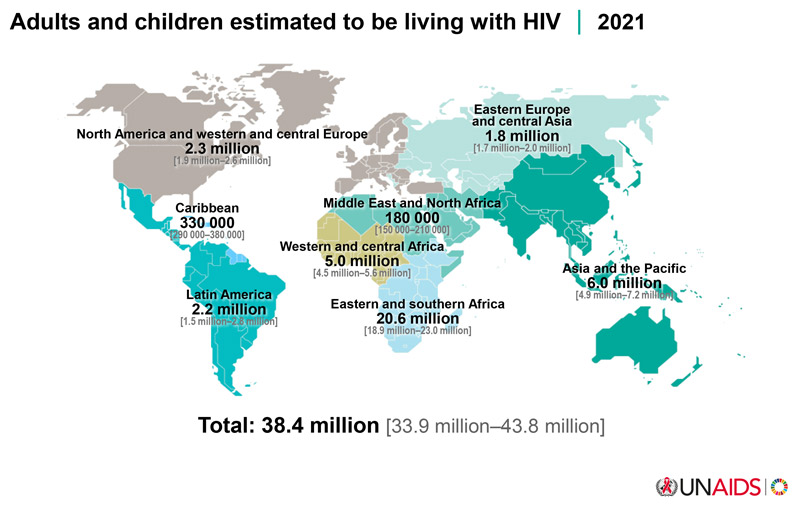On Dangerous Ground
A new UNAIDS global AIDS report shows that progress in addressing the epidemic has stalled
On the eve of the International AIDS Conference in Montreal, UNAIDS released its report on the global HIV response during the last two years of COVID-19 and other global crises. The simple title says it all: In Danger.
According to the new data, progress in prevention and treatment has diminished to the point where urgent action is needed to address the inequalities driving AIDS and prevent millions of new HIV infections and millions of AIDS-related deaths.
Among the report’s main findings:
- New HIV infections declined only 3.6% in 2021 compared to 2020, the smallest annual decrease since 2016.
- 1.5 million new infections occurred last year—more than 1 million higher than UNAIDS targets.
- New HIV infections in the Asia-Pacific region, the world’s most populous region, had been declining for a decade but now they are on the rise, and UNAIDS describes the numbers as “alarming.”
- New infections in Eastern Europe and central Asia, the Middle East and North Africa, and Latin America continued to increase, as they have over the past decade.
- Since 2015, annual HIV infections have increased in 38 countries around the world.
- While substantial declines in new HIV infections have been recorded in western and central Africa and in the Caribbean, UNAIDS points out that a lack of resources threatens these gains.

Adolescent women and girls (15 to 24 years) continue to face health disparities. In sub-Saharan Africa, for example, they are three times more likely to acquire HIV than their male counterparts. Globally, a new infection occurred every two minutes among adolescent women and girls in 2021.
Key populations, which account for less than 5% of the global population, were disproportionately impacted—men who have sex with men (MSM), people who inject drugs, female sex workers, and transgender individuals, as well as the sexual partners of these individuals, made up 70% of new HIV infections in 2021.
- MSM are 28 times more likely to acquire HIV than adult men in the general population.
- People who inject drugs are 35 times more likely to acquire HIV than those who do not.
- Female sex workers are 30 times more likely to acquire HIV than adult women in the general population.
- And transgender women are 14 times more likely to acquire HIV than adult women in the general population.
Members of racial and ethnic minorities in countries like the United States have not kept pace with their white counterparts when it comes to HIV prevention.
UNAIDS points out that, if not stalled, the current rate of HIV infection—4,000 people, including 1,100 young people, every day—will result in 1.2 million newly infected people in 2025, tripling the target that UNAIDS has set for that year. The report underscores that deaths in 2021—an estimated 650,000, or one AIDS-related death every minute—were preventable in this age of lifesaving treatments. The number of people accessing combination antiretroviral therapy increased by only 1.47 million in 2021, the smallest increase over a decade.
“Leaders must not mistake the huge red warning light for a stop sign.”
—Winnie Byanyima, UNAIDS Executive Director
Despite these challenges, which continue to be exacerbated by reductions in international HIV funding, mass displacements, poverty, and social inequalities, UNAIDS believes that its 2030 targets can still be met. Spotlighting success stories in diverse countries around the world, the report outlines four key actions needed to effectively respond to HIV/AIDS: Make a new push for HIV prevention; realize human rights and gender equality; support and effectively resource community-led responses; and ensure sufficient and sustainable financing.
UNAIDS Executive Director Winnie Byanyima said that forward momentum is key: “When international support has been most needed, global solidarity has stalled. Leaders must not mistake the huge red warning light for a stop sign. This must become a moment for a surge of international support.”
Share This:
